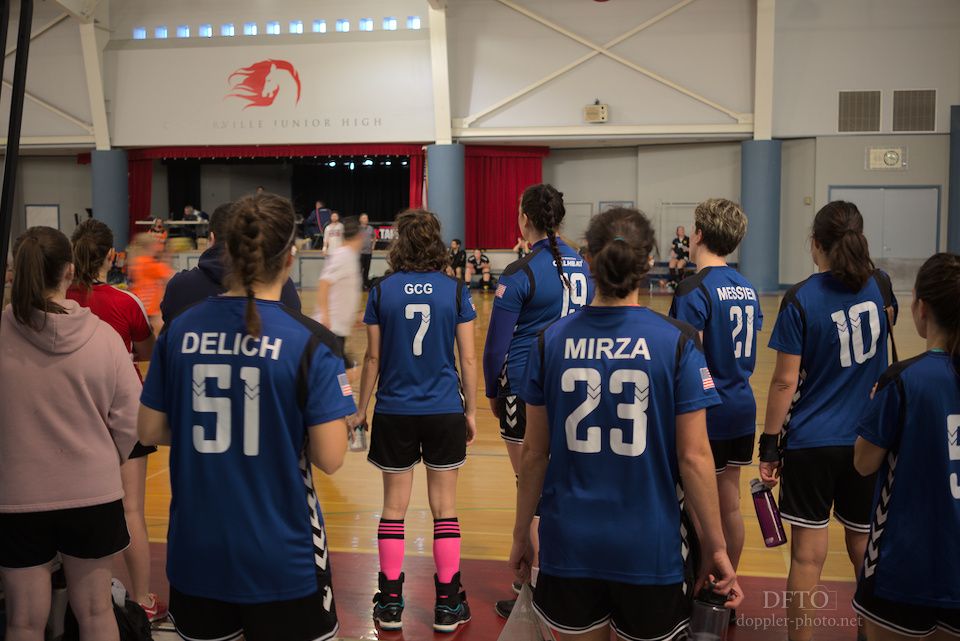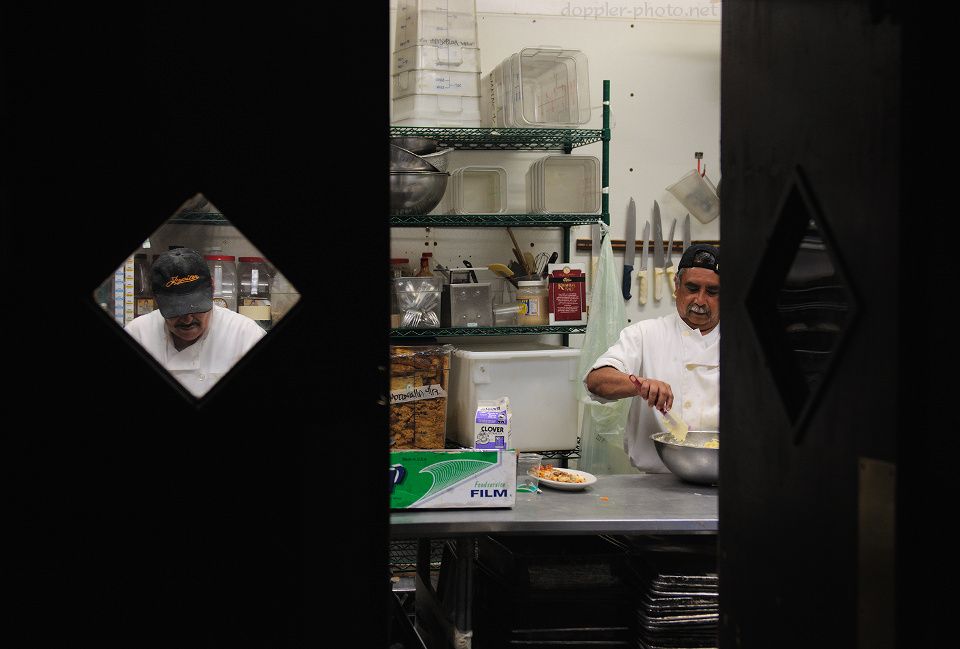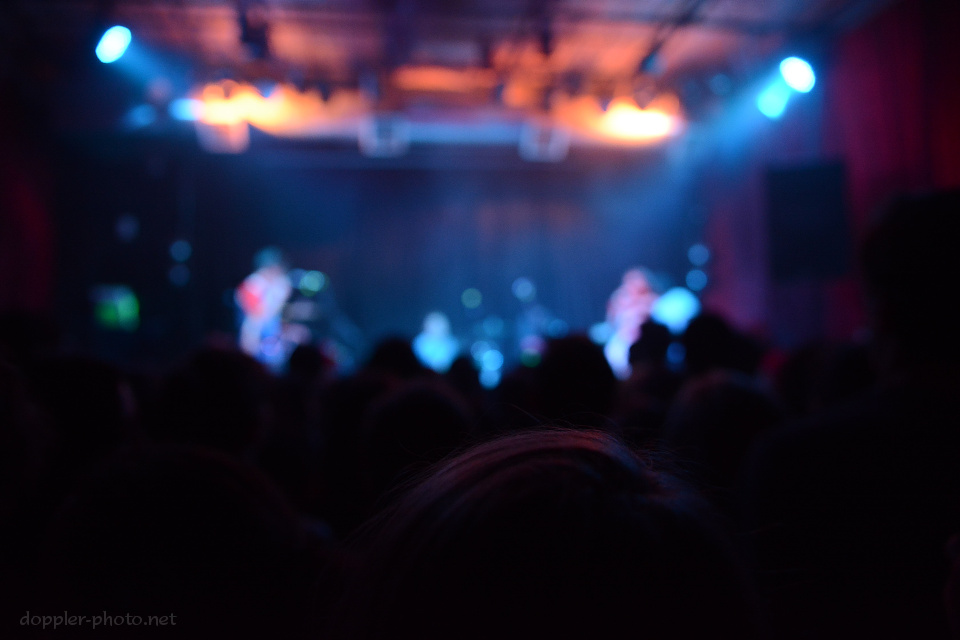
Around a year ago, Sigma launched the 18-35 f/1.8 zoom lens. An f/1.8 constant zoom. Wow. I snapped one up as soon as I could afford it, but there were some teething problems the first time I tried it, and after that it just sat in my bag. It never quite got dark enough for me to face those problems and use it in place of my Nikon 24-70/2.8.
But I knew darker times were approaching (this weekend, as it happens), and earlier this month, I figured it was as good a time as any to force myself to learn how to use this lens. I shot a concert with my friends, Holychild, and all I had on me were this lens and my typical long lens, the Nikon 70-200/2.8. All shots in this post are from the 18-35.
Finally, a few technical notes. This lens is 18mm-35mm f/1.8, and is designed for APS-C bodies. For Nikon's 1.5x crop factor, this means that the effective focal length is 27mm-52.5mm in full-frame terms, and the effective depth-of-field matches f/2.7 on full-frame. That said, the light-gathering ability of the lens is independent of the sensor size — you would have to use an f/1.8 constant zoom to gather the same amount of light with a full-frame body — but on the other hand, the APS-C sensors will exhibit more noise at each ISO as compared to similar-resolution full-frame sensors.
All that means that this lens can put an APS-C body on similar footing to its full-frame cousins, but likely won't cause it to perform better than those full-frame bodies by most regards. Anyway, on to the show…
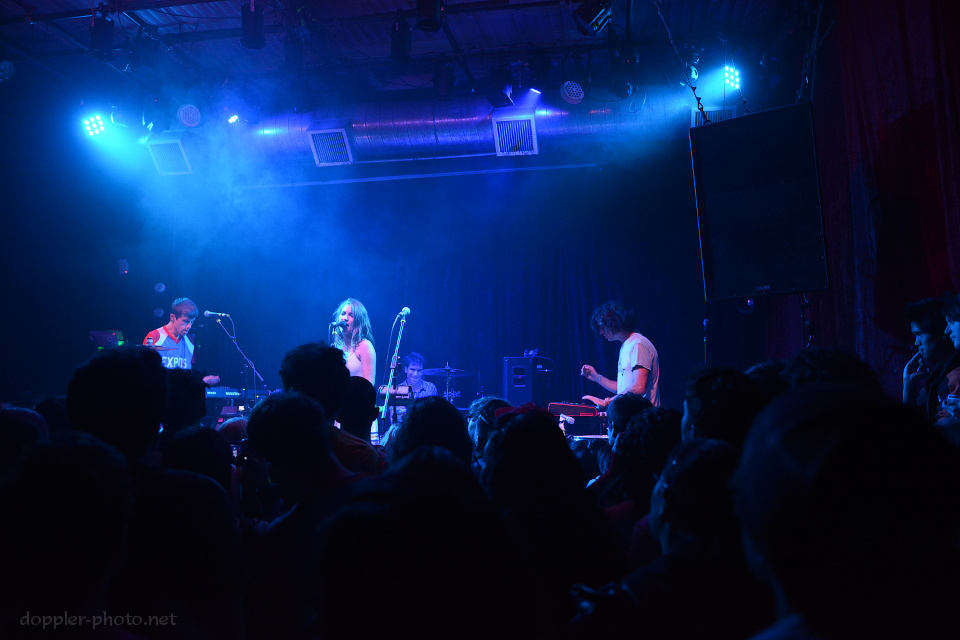
It was pretty tricky at first. The 18-35 and 24-70 focal ranges hardly overlap, and they call for different shooting styles. Also, I hadn't realized just how much I had internalized what settings to use when shooting with an f/2.8 lens. I shot this at 1/50s, 1250ISO. At f/2.8, things would've been fine, if a little hot. At f/1.8, all the highlights were completely blown. Whoops.
On the other hand, the detail in the audience is something I had been struggling to capture with the 24-70, and with this lens, it was pretty much effortless. So there's that.
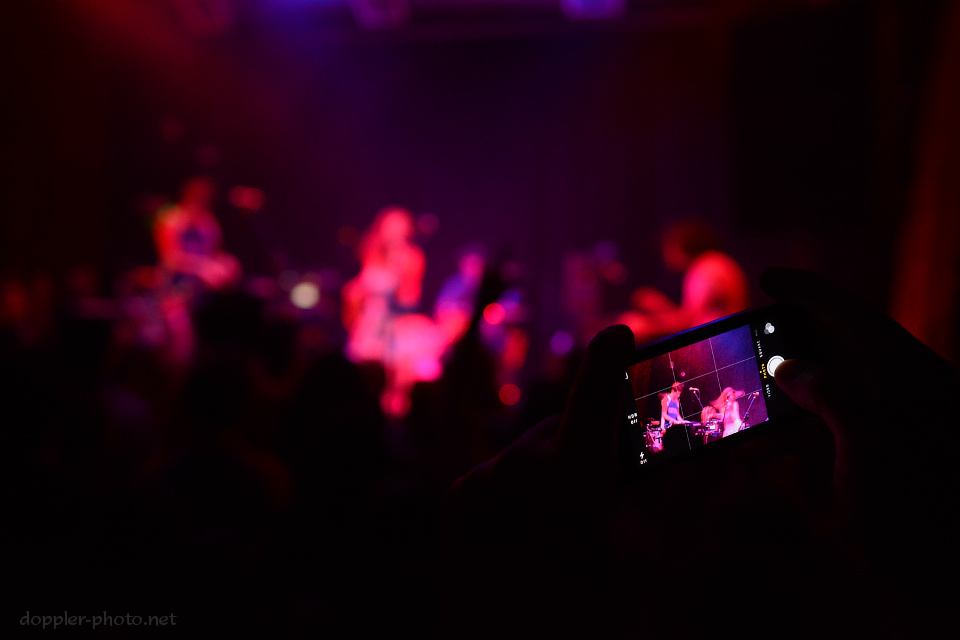
The key with any wide lens, of course, is to get close to things. Which I found incredibly uncomfortable at first. I like to move around when shooting, but when that's difficult, I look for perches that give me a reasonable view of the crowd and of the stage. As with any perch, though, it's far away from all but a few things. This shot convinced me that I needed to get closer to the stage.
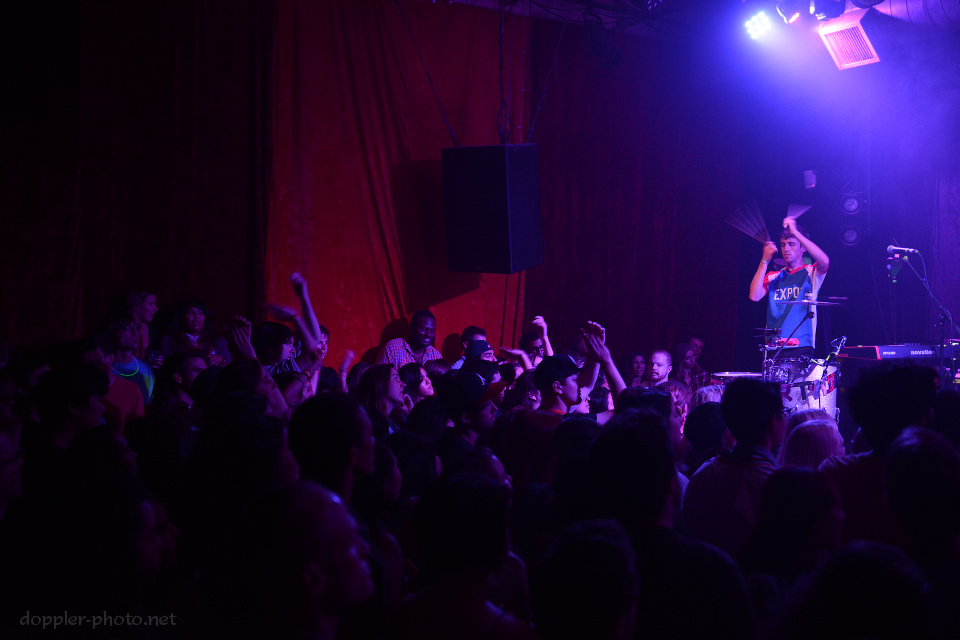
Another crowd shot. This one was 1/30s at f/1.8, 1000ISO, which is pretty far outside the the scope of the 24-70 (at least, without bumping the ISO and losing some of the smoothness of the gradients fading to black). I again love how you get a glimpse of even the people who aren't in the spotlight.
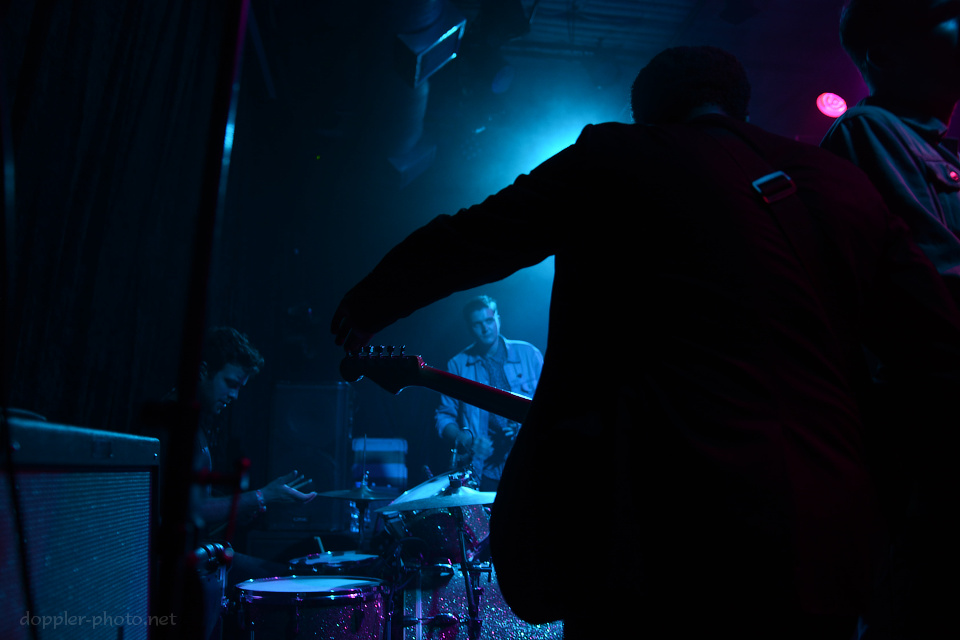
The night ended with a headline performance by Miniature Tigers. During the short opportunity afforded by the changing sets, I made a leap of faith and painted myself into a corner that was way too close to the stage. Of course, way too close turned out to be just the right distance. The 18mm wide end meant that I wasn't as cramped as I would have been with the 24mm, and the position gave me a completely different perspective on the concert.

Even something as simple as having the musicians appear larger in the frame than the audience members is something I've only previously accomplished in outdoor, open-stage concerts. But this lens made it easy simply because it was wide enough to get most of the musician in the frame, and bright enough to capture the faces of the audience-members. I also love the speckles of colored light in the distance — there's enough dynamic range to see some hints of the surroundings.

Sadly, this lens isn't all sunshine and rainbows. The primary drawback is the extremely short focal length range. This photo has the lens racked out to full tele, and it's just not that long. The hole between 18-35 and 70-200 is pretty significant, and there were plenty of times during the concert where my ideal composition would have landed me in that gap. In terms of canonical full-frame focal lengths, I miss the entire 60mm-90mm portrait range.
Also, autofocus is slow. I mean, it's still usable, and I still adjusted to it pretty quickly, but shooting back-to-back with the 24-70 made the difference blindingly obvious. The 24-70 doesn't rack the focus so much as pick a distance and land there — the actual time required for the focus elements to move is almost imperceptible. The 18-35 isn't quite so supernatural — when I focus on something, I watch it come into focus, whereas with the 24-70, the viewfinder starts off blurry and ends up sharp with almost no apparent transition.
All in all, though, I feel like I figured out when it'll come in handy, and what kinds of tradeoffs I'll be making if I slap it on a body. So mission accomplished.




